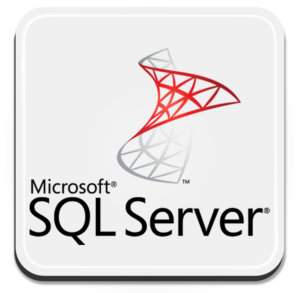In today’s data-driven world, SQL Server databases play a vital role in storing and managing critical information for businesses and applications. However, a poorly optimized SQL Server can lead to a host of problems, including slow response times, increased resource consumption, and compromised user experiences. In this blog post, we will explore the significance of optimizing SQL Server performance and how it can significantly enhance the efficiency of your database system.
Indexing Strategies:
Indexing is a critical aspect of optimizing SQL Server performance. It involves creating data structures that enhance data retrieval speed and efficiency by facilitating faster query execution. SQL Server supports various indexing strategies, such as clustered and non-clustered indexes.
A clustered index determines the physical order of data in a table, while a non-clustered index creates a separate data structure containing indexed columns’ values and pointers to the corresponding rows in the original table. Choosing the appropriate columns to index is crucial, as it can significantly impact query performance. By identifying frequently accessed columns and creating appropriate indexes, database administrators can drastically reduce query execution times and improve overall database responsiveness. However, over-indexing can lead to increased storage requirements and additional maintenance overhead, so it is essential to strike a balance between indexing and query performance to achieve optimal results. Regularly reviewing and fine-tuning indexes based on query patterns and usage can further enhance SQL Server’s efficiency and ensure consistently high-performance levels
Query Optimization:
Query optimization is a fundamental process in SQL Server aimed at improving the efficiency and performance of database queries. It involves analyzing and reorganizing SQL queries to reduce execution time and resource consumption.
The SQL Server query optimizer plays a key role in this process by determining the most efficient execution plan for each query. To optimize queries, developers and database administrators can employ various techniques such as avoiding the use of SELECT * and explicitly specifying the required columns, using query hints to influence the query execution plan, and restructuring queries to reduce the number of joins and sub queries.
Additionally, utilizing parameterized queries helps prevent SQL injection attacks and encourages query plan reuse. Continuous monitoring and analysis of query performance using tools like SQL Server Profiler or Extended Events allow identifying long-running or inefficient queries that require further optimization. By prioritizing query optimization, businesses can significantly enhance their SQL Server’s overall performance, leading to faster response times, reduced resource consumption, and improved user experiences.
Performance Monitoring and Analysis:
Performance monitoring and analysis are critical components of maintaining a well-optimized SQL Server environment. Regularly monitoring the database’s performance allows administrators to identify potential bottlenecks, resource constraints, and query inefficiencies.
SQL Server offers various built-in tools, such as SQL Server Profiler, SQL Server Management Studio (SSMS), and Dynamic Management Views (DMVs), which aid in collecting performance-related data and metrics. These tools enable the tracking of query execution times, resource usage, and wait statistics, offering insights into the overall health of the database system. Additionally, Extended Events provide a more lightweight and customizable alternative to Profiler for capturing and analyzing performance-related events.
Armed with this valuable data, administrators can analyze trends, identify areas of concern, and take proactive measures to optimize the database’s performance. Regular performance analysis not only ensures smooth and responsive database operations but also helps in capacity planning and fine-tuning the system for optimal performance in the long run.
Hardware Considerations:
Hardware considerations play a crucial role in ensuring the optimal performance and stability of a SQL Server database. Choosing the right hardware configuration is essential, as it directly impacts the database’s ability to handle workloads efficiently.
First and foremost, CPU performance is critical for processing queries and transactions. Selecting a multi-core processor with high clock speeds can significantly improve query execution times, especially for complex operations.
Secondly, memory (RAM) is vital for caching data and query execution plans, reducing the need for disk I/O and enhancing overall performance. Adequate memory allocation is essential to prevent excessive paging and ensure smooth database operations.
In terms of storage, using fast and reliable drives, such as solid-state drives (SSDs) or NVMe storage, can dramatically reduce data retrieval times and improve the responsiveness of the database. Properly configuring disk subsystems, such as RAID configurations, can further enhance data redundancy and availability.
Additionally, network bandwidth should not be overlooked, particularly in distributed or remote environments, as it affects data transfer speeds between the application and the SQL Server. By carefully considering and optimizing hardware components, database administrators can create a solid foundation for their SQL Server, maximizing its potential to handle demanding workloads and deliver superior performance to end-users.
I hope this article proves to be helpful.

Leave a Reply